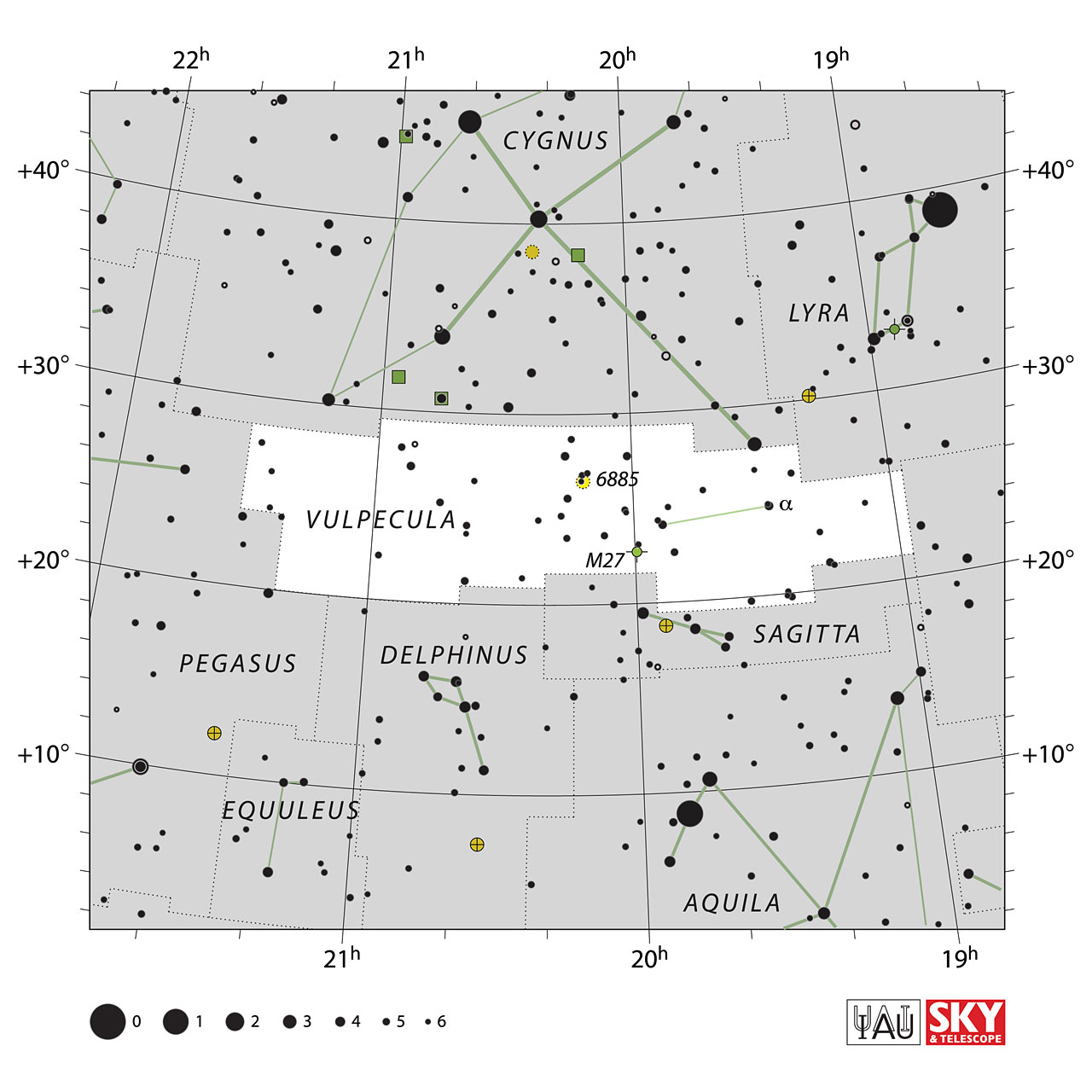Vulpecula


Vulpecula is a small, faint constellation in the northern sky, introduced by the Polish astronomer Johannes Hevelius in 1687.
It can be found in the middle of the Summer Triangle asterism, and is highest in the evening sky in the months around July.
Vulpecula contains no bright stars – Alpha Vulpeculae shines at a meagre mag 4.4. It does, however, lie close to the plane of the Milky Way, and contains several open clusters. The Dumbbell Nebula (M27) – the brightest planetary nebula in the sky – also lies within its borders.
Vulpecula represents a fox with a goose in its mouth, chosen by Hevelius because it lay next to two other hunting animals, the Eagle (Aquila) and the vulture (a historical interpretation of Lyra).
In the Indian constellation system this constellation is called ಶೃಗಾಲ (Shrugaala)
Vulpecula contains:
-
Stars
- α-Vul (mag 4.5)
- 23-Vul (mag 4.5)
- 31-Vul (mag 4.6)
- 13-Vul (mag 4.6)
- NT Vul (mag 4.7)
- QR Vul (mag 4.7)
- 1-Vul (mag 4.7)
- 29-Vul (mag 4.8)
- 12-Vul (mag 4.9)
- 30-Vul (mag 4.9)
- 9-Vul (mag 5.0)
- 32-Vul (mag 5.0)
- 28-Vul (mag 5.0)
- 17-Vul (mag 5.0)
- 4-Vul (mag 5.1)
- QS Vul (mag 5.2)
- 3-Vul (mag 5.2)
- NU Vul (mag 5.2)
- 33-Vul (mag 5.3)
- 24-Vul (mag 5.3)
- 35-Vul (mag 5.4)
- ES Vul (mag 5.4)
- 19-Vul (mag 5.5)
- 10-Vul (mag 5.5)
- 18-Vul (mag 5.5)
-
Open Clusters
-
Globular Clusters
- None
-
Galaxy
View Vulpecula in 3D 
Source: Wikipedia, in-the-sky.org
Image Courtesy: Sky&Telescope & IAU, Illustration Images linked from Urania's Mirror on Wikmedia Commons by Sidney Hall
Image Courtesy: Sky&Telescope & IAU, Illustration Images linked from Urania's Mirror on Wikmedia Commons by Sidney Hall
